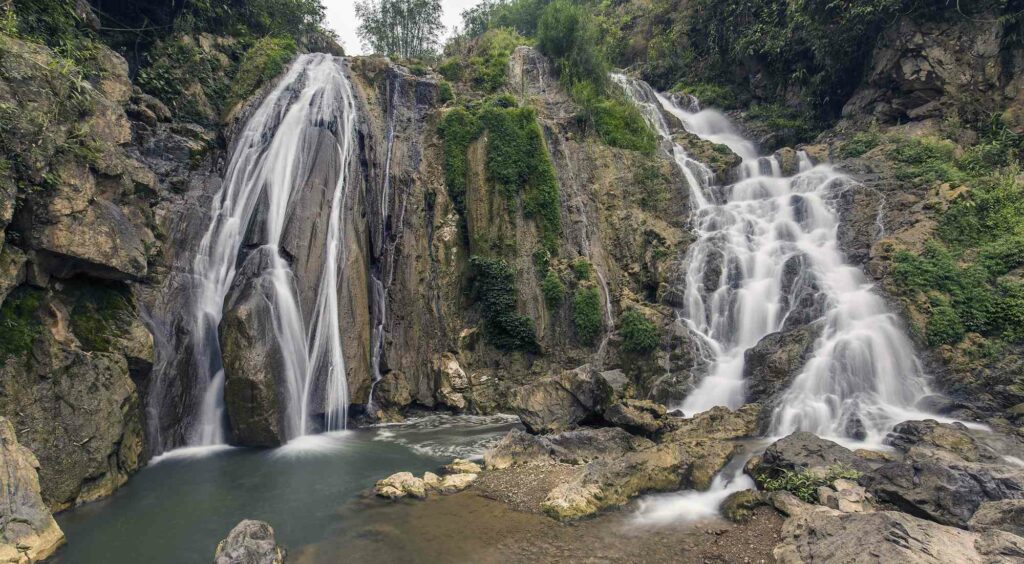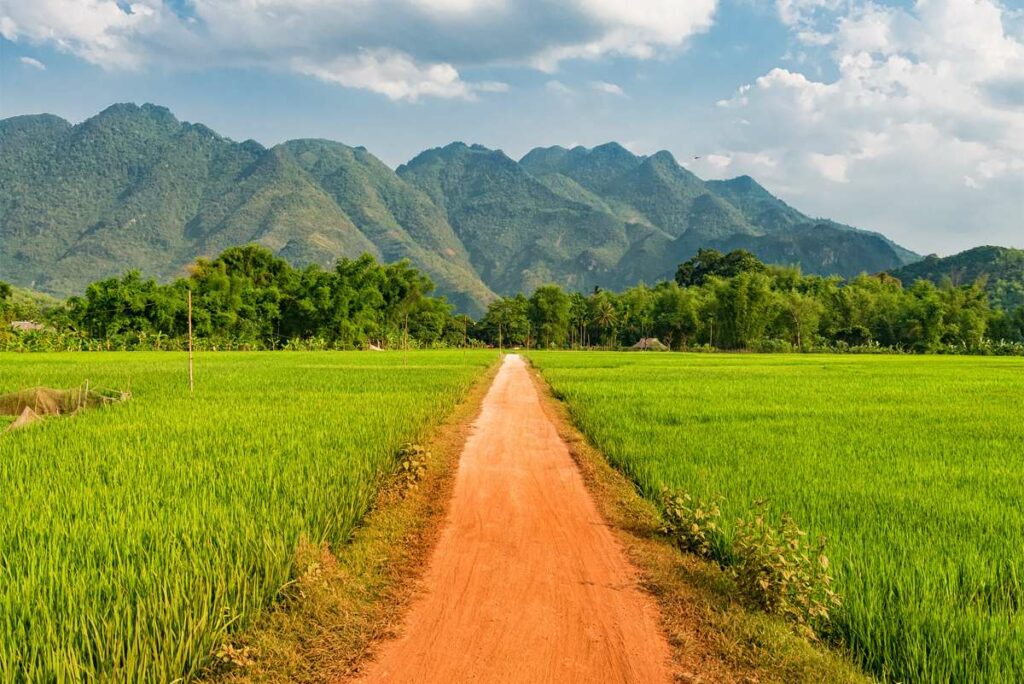What is Go Lao Waterfall like?
Go Lao Waterfall is around 30 meters high and fed by two mountain streams, Thung Cang and Phieng Sa, which merge and cascade down a rocky cliff into a natural pool. The waterfall is surrounded by dense forest, bamboo groves, and steep rock formations that create a peaceful, jungle-like setting. At the base, the clear pool is perfect for a refreshing swim on hot days, especially in the dry season.

A concrete staircase leads from the road above all the way down to the bottom of the falls. It’s a short but adventurous walk, with lush greenery on both sides and the sound of water growing louder with every step. If you continue a little further past the top of the stairs, you’ll find a small viewpoint directly across from the falls—a great spot for photos or simply taking in the view.
How to get to Go Lao Waterfall
From Mai Chau – Area in and around Lac Village (13 km – best access point)
The easiest way to reach Go Lao Waterfall is from Lac Village, the main tourist hub in Mai Chau. From here, it’s about 13 km—roughly 30 to 40 minutes by motorbike or car. You can rent a motorbike from most accommodations, book a car with driver, or ride on the back of a local guide’s motorbike for a more relaxed option. The road is mostly paved, though winding and narrow in some places.
If you’re not in Mai Chau yet, check our guide on how to get there from Hanoi.
From other areas around Hoa Binh Lake
If you’re staying near the lake rather than Mai Chau, Go Lao Waterfall is still close—just follow the road that runs along the lake toward Phuc San Commune. The route has some great views of the water and countryside.
Bicycle option
It’s technically possible to reach the waterfall by bicycle, but only recommended for experienced cyclists with a good-quality bike. Most of the free bikes offered by homestays aren’t suitable for this kind of ride, and the route includes stretches of highway with traffic and little shade.
Entrance Fee & Facilities
The entrance fee for Go Lao Waterfall is 10,000 VND per person, usually paid in cash to a local ticket guard. Children under 12 are often free, and payment is sometimes collected after your visit rather than before.
There are no formal services at the site—no lifeguards, food stalls, or changing rooms—so plan ahead and bring what you need. You’ll find free parking available at the top of the stairs leading down to the waterfall.
Tip: Make sure to bring your swimming short and your own towel
Things to do at Go Lao Waterfall

Cool off in the natural pool – On warm days, the clear pool at the base of the waterfall is perfect for a refreshing splash. While it’s too shallow for a real swim, it’s just deep enough to sit in the water and cool off your body—or simply soak your feet and relax on the rocks.
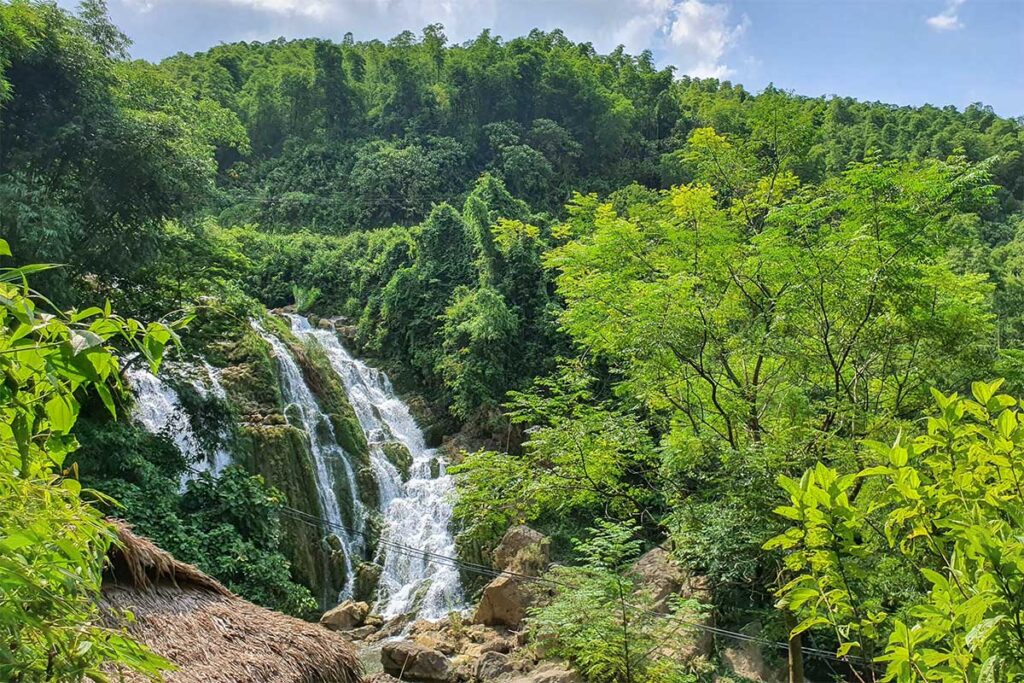
Capture great photos – There’s a small viewpoint directly across the waterfall that offers one of the best photo angles. In the early morning, you might catch a light mist rising from the falls, adding a magical touch to your shots.

Walk through the jungle path – The staircase down to the pool cuts through forest and bamboo groves, offering a short but scenic nature walk. You can also explore the rocks and edges of the pool once you’re at the bottom.
Enjoy a picnic by the water – Bring your own food and drinks and relax beside the falls. There are no food stalls or services here, so come prepared and remember to take your trash with you.
Make it part of a longer loop – Go Lao Waterfall is easy to combine with stops like Hoa Binh Lake, Thung Khe Pass, and the quiet countryside nearby—more on that in the next section.
Highlights & Tips near Go Lao Waterfall
A visit to Go Lao Waterfall isn’t just about the falls themselves—it’s also a great opportunity to explore more of the surrounding area. Whether you’re driving, biking, or riding with a guide, here are a few scenic stops nearby that are easy to combine into a half-day or loop trip.
Tip: Read ‘Mai Chau Loop‘ that includes a route with visits to Go Lao Waterfall Hoa Binh Lake, villages and Mai Chau Viewpoint.
1. Hoa Binh Lake
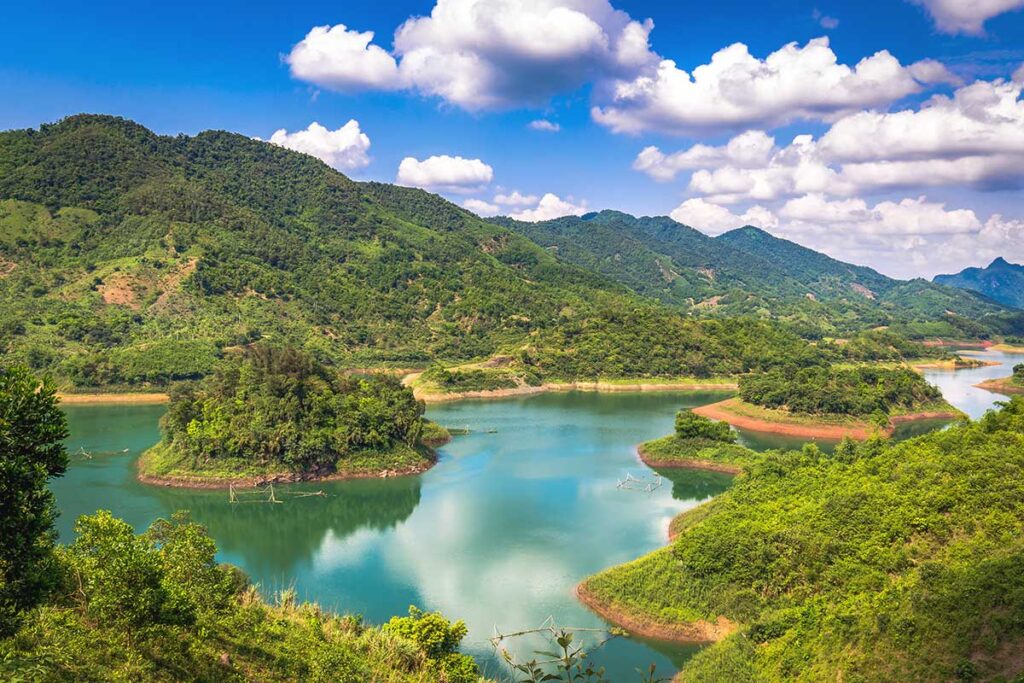
Right next to the waterfall lies Hoa Binh Lake, the largest artificial lake in Southeast Asia. The road between Go Lao and the lake offers fantastic views of calm water and forested islands. From a small pier near the waterfall, you can arrange short boat trips on the lake.
Want to explore further? See our full guide to Hoa Binh Lake.
Pro tip: 1.5 km from Go Lao Waterfall is Mai Chau Floating House, where you can rent kayaks or relax on the lake; read more about kayaking at Hoa Binh Lake here.
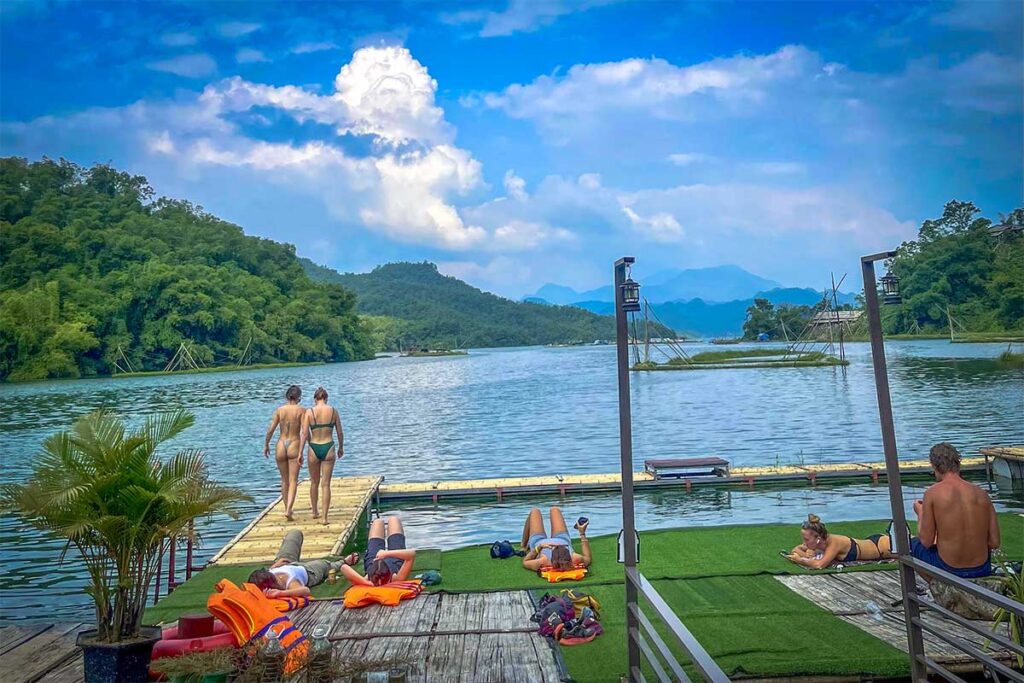
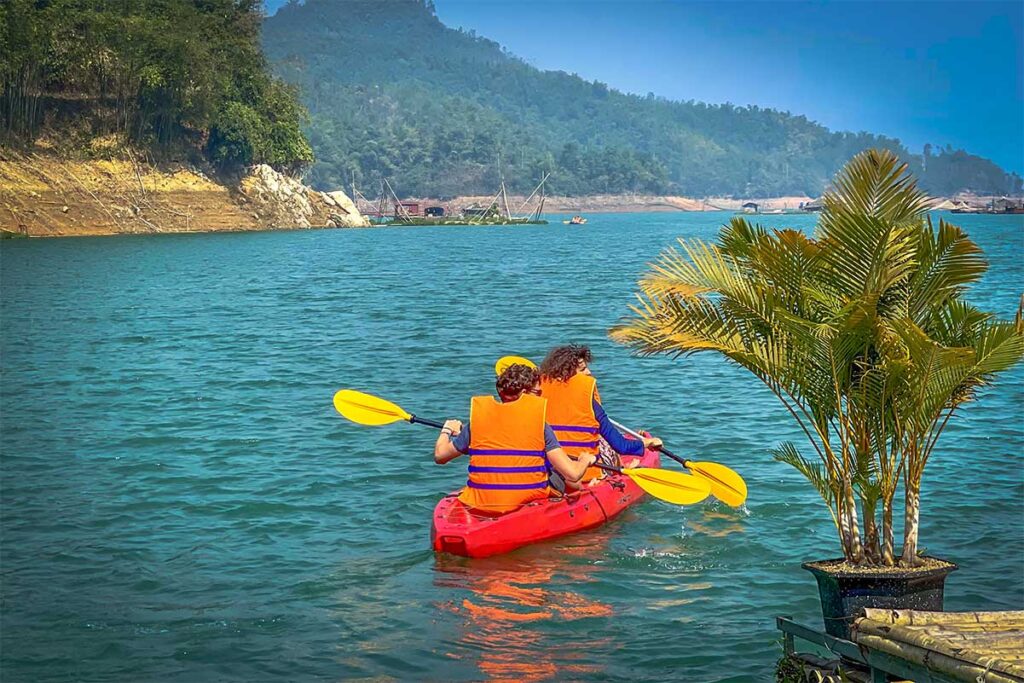
2. Scenic countryside drive
The route from Mai Chau to Go Lao Waterfall winds past open rice fields, bamboo groves, and small minority villages. It’s a great chance to see more of the rural side of Mai Chau, especially if you’re driving yourself or with a local guide. The road continues beyond the waterfall, hugging the lakeside and weaving through quiet, untouristed landscapes.
3. Thung Khe Pass Viewpoint
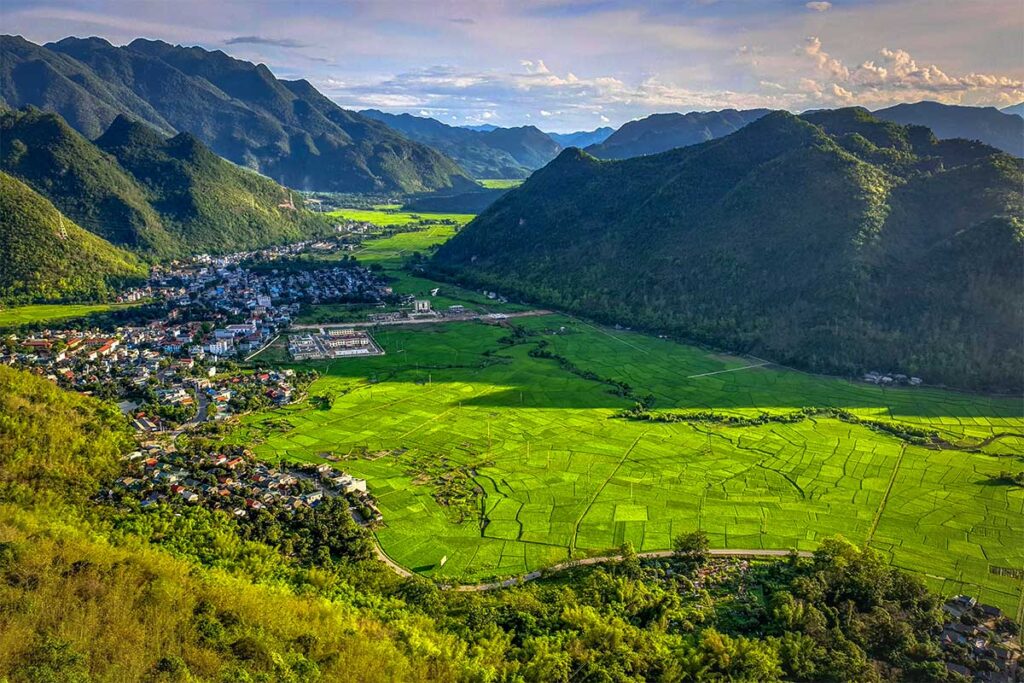
At the far end of the loop, you’ll reach Thung Khe Pass, a mountain stretch with one of the best panoramic viewpoints in the region. Just before the road drops back down into the Mai Chau Valley, there’s a wide parking area with local snack stalls and stunning views over the entire valley—especially beautiful in the late afternoon.
Best time to visit Go Lao Waterfall
The best time to visit Go Lao Waterfall depends on your priorities—water volume, swimming conditions, or weather comfort.

During the rainy season (May to October), the waterfall is at its most powerful and visually impressive, with a stronger flow and a larger natural pool. This is also the hottest time of year, making it perfect for cooling off with a swim. There’s a higher chance of rain, especially in the late afternoon, but mornings are often clear and good for exploring.

In the dry season (November to April), the waterfall becomes smaller and calmer, and by late dry season, the flow may be quite weak. Early dry-season months (like November) still offer good conditions for light hiking and photos. However, the winter months (December to February) can be too cold for swimming. Things warm up again in March and April, with pleasant weather—though by then, water levels may be lower after months without much rain.
Alternative waterfalls near Mai Chau
If you have more time or want to explore deeper into the region, here are two other waterfalls worth considering—not as convenient as Go Lao, but each with something unique to offer.
Pung Waterfall (22 km)

A hidden jungle waterfall near Avana Retreat, reached via a quiet road through the hills. It’s best for travelers with more time or those heading toward Pu Luong. You can visit it in a loop, combining both access routes.
Tat Nang Waterfall (27 km)
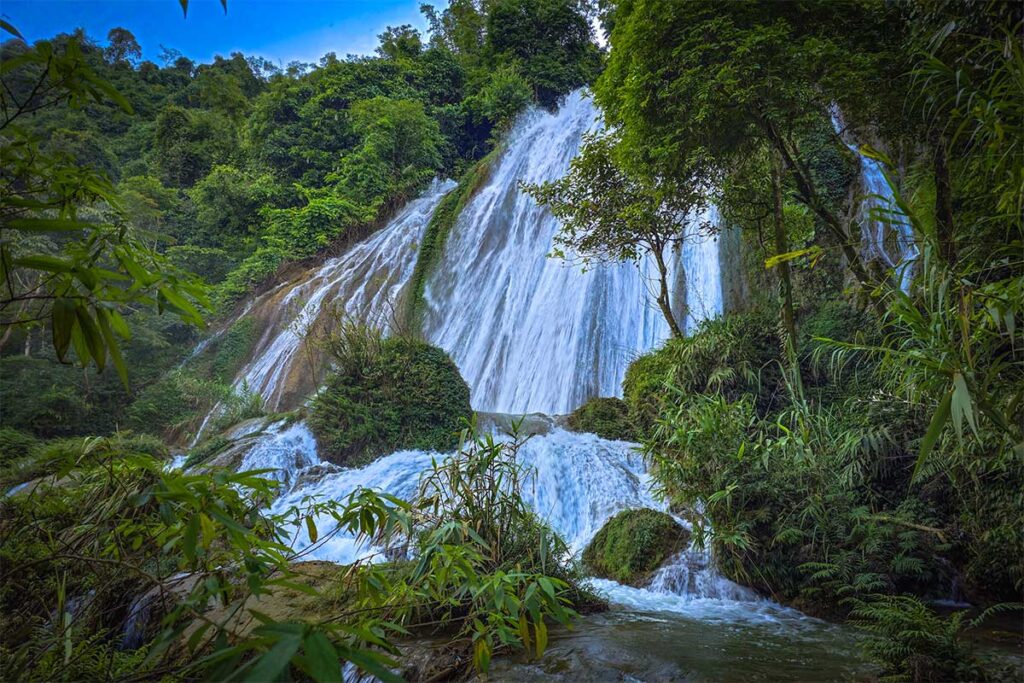
The tallest waterfall in the area—over 100 meters with three tiers—located across the border in Son La Province. It’s a good option if you’re combining the trip with visits to minority villages in the Phu Mau area.
